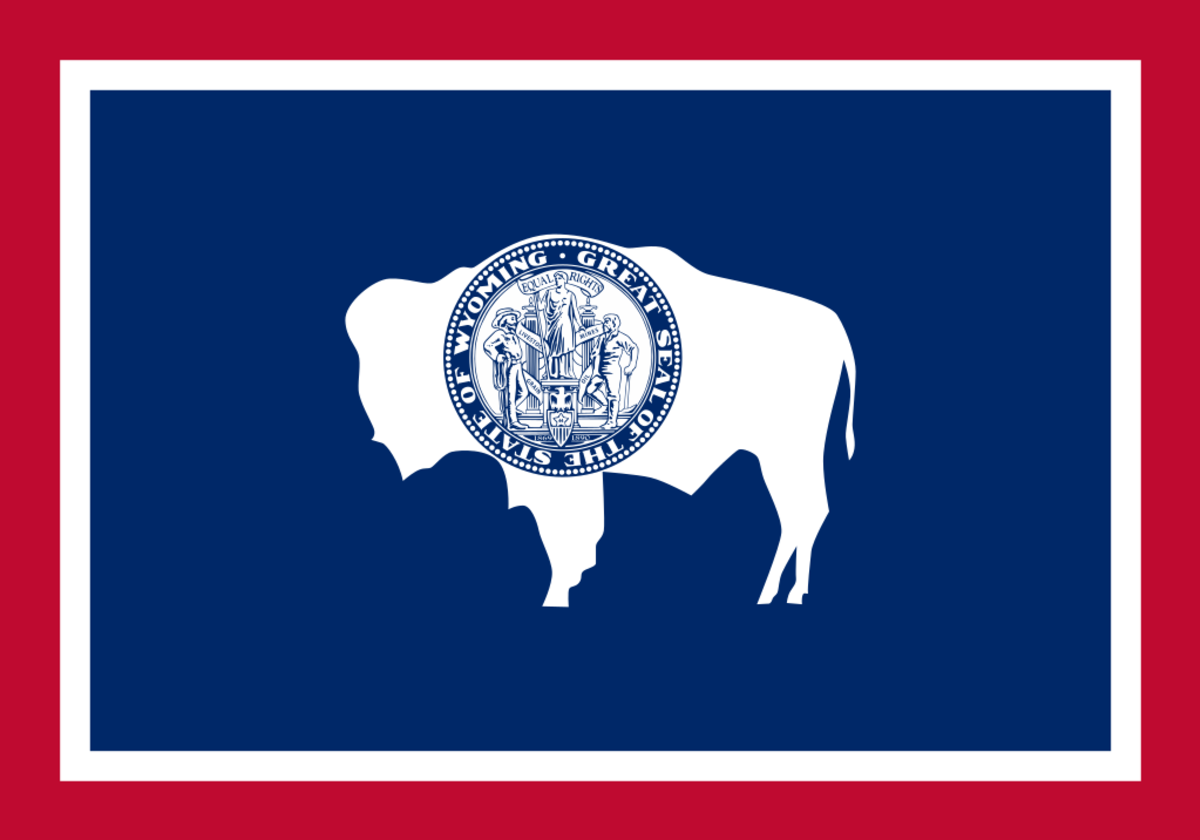Wyoming Divorce Laws

Among the 50 states, Wyoming has one of the fewest recorded weddings, with just over 3,900 in 2020. This means that the state had an average of 11 weddings per day during that year. Despite this low number, cases of divorce still occur in Wyoming. According to the CDC, it had a 3.7% divorce rate in 2021.
Many couples decide to end their marriage for various reasons, such as personality differences, disrespect, infertility, and long-term illnesses. If you are thinking of parting ways with your spouse or if your partner has made the decision to file for divorce, you will need to be aware of the complex process you are about to go through. This article provides an overview of the state’s divorce laws and various resources that can guide you in this difficult time.
Divorce vs. Annulment vs. Legal Separation in Wyoming
In Wyoming, a couple must have a valid marriage to get a divorce. This means that both parties should not be married to someone else at the time of their marriage to their current spouse. Some grounds for divorce are irreconcilable differences and incurable insanity, which refers to the other party being psychologically incapacitated.
Annulment, on the other hand, can be granted if it is discovered that a party in a marriage has already been married at the time of their wedding to their current spouse. A marriage can also be annulled if either party is underage or the spouses are close relatives. In short, an annulment’s legal grounds include fraud, underage status at the time of marriage, and incest, as well as impotence.
A legal separation deals with the same concerns handled in a divorce. However, spouses are still legally married to each other after their legal separation procedure has been finalized. The process has a mandatory 20-day waiting period that couples can use to negotiate their separation terms.
Is Wyoming a No-Fault State When It Comes to Divorce?
Wyoming allows no-fault and at-fault divorces. The no-fault divorce process is faster and simpler since divorcing couples do not need to provide any reason aside from irreconcilable differences to make their marriage void. For this reason, most individuals in the state choose this option, even if their spouse may have committed wrongdoing. Meanwhile, to file an at-fault divorce in Wyoming, the petitioner must give a reason, such as abuse or adultery.
How to File for Divorce in Wyoming
The general rule in Wyoming is that spouses must have lived in the state for at least 60 days before they can file for divorce in their county’s district courts. If one of the parties moves out of the state during divorce, the process will not be halted and will still be ongoing.
Moreover, the complexity of divorce cases depends on couples’ relationship issues, but they typically follow these steps:
Step 1: Prepare the Divorce Papers
Divorcing couples in Wyoming can get their initial divorce papers from the state’s Judicial Branch website. The basic forms they need include summons, vital statistics forms, civil case cover sheets, and confidential statements for child support orders if they have minor children. They must also prepare a Complaint for Divorce, which states custody, division of property, and alimony terms.
Step 2: File the Divorce Papers
After preparing all the initial divorce papers, the petitioner has to submit them to the district court clerk’s office. They must also prepare a $120 filing fee. However, if they cannot afford this, they can submit an Affidavit of Indigency and Request for Waiver of Filing Fees, along with detailed information regarding their income, debts, and assets.
Step 3: Serve the Divorce Papers to the Other Party
In Wyoming, parties who have initiated divorce must serve the file-stamped papers to their spouses within 90 days. Otherwise, their cases will be dismissed by the court.
There are several ways to serve divorce papers to one’s spouse. The petitioner can hand over the documents with an Acknowledgement and Acceptance of Service. After their spouse signs the notarized documents, these should be submitted to the court. However, if their spouse refuses to receive the forms, the petitioner can seek help from the sheriff or anyone over 18 years old to deliver the divorce papers and file proof of service with the court.
Another way to serve divorce papers is to send a written request to waive service through first-class mail or delivery. The petitioner’s spouse must provide a stamped return envelope when returning the signed waiver as proof of receipt.
If the petitioner cannot find their spouse, they may contact the district court clerk’s office for alternative methods, like publishing a divorce notice in the newspaper.
Step 4: Wait for the Other Party’s Response
The petitioner’s spouse is given 20 days to respond after receiving the divorce papers. The waiting period can be extended to 30 days if they are outside the state.
They should read and respond to each paragraph in the Complaint for Divorce by answering either “admit” or “deny.” If they are unable to answer a paragraph, they should state why by giving an Answer or an Answer and Counterclaim.
If the spouse disagrees with the petitioner and fails to state a reason why, the judge will consider their response as an agreement to the claim. If they do not respond at all, a default judgment is possible, and the petitioner is likely to get the requests they stated in the Complaint for Divorce.
Step 5: File a Confidential Financial Affidavit
Divorcing couples with minor or dependent children must submit a confidential financial affidavit. They must provide detailed information about and documentation of their expenses and income. It is important to provide accurate information because incorrect or misleading details may result in fines or imprisonment.
Step 6: Attend a Parenting Education Course
In Wyoming, divorcing spouses need to take a parenting education course to help them understand the possible effects of divorce on their children. They must know that their separation might affect their kids mentally and emotionally. Through a parenting education course, couples will also learn how to make co-parenting possible and manage their conflicts.
After taking the course, couples must submit a certificate of completion to the court.
Step 7: Finalize the Divorce
Couples who are not required to attend a hearing and have filed an Affidavit for Divorce without Appearance of Parties can wait for the judge to finalize their divorce after submitting the required documents.
However, if there are any contested matters or if it is a requirement in the county where the divorce is taking place, the couple should ask for a trial to take place through a Request for Setting form. During this process, both spouses are encouraged to work with an attorney to represent them.
After the trial, the judge makes a decision and then signs the Decree of Divorce, signifying the divorce procedure’s conclusion.
How Property Is Divided in a Wyoming Divorce
Marital properties are not divided equally during a divorce because Wyoming is not a community property state. During the divorce process, the court divides the properties by following the equitable distribution policy. In general, the distribution of property depends on several statutory factors, including the following:
Income and earning capacity: The state may provide a greater share to the spouse who earns less than the spouse with a higher income.
Marital fault: The at-fault spouse may receive a lower percentage of their properties.
Child custody: If the spouse has full custody of their children, they might receive a higher estate percentage.
Educational contributions: Spouses may receive a higher percentage of marital property if they contribute more to their children’s education.
However, having an existing prenuptial agreement may affect property division since the court needs to follow the terms indicated in the contract. For example, if one spouse owns 80% of their properties, as stated in the prenuptial agreement, they can take 80% of their properties in the event of a divorce. Most individuals who have high-value assets consider having prenuptial agreements.
Wyoming Divorce FAQs
The following set of questions and their corresponding answers aim to help individuals who want to file for divorce or are served with divorce papers.
Legal Resources for Getting a Divorce in Wyoming
Going through a divorce is not easy; couples in Wyoming might need help navigating the complex marriage dissolution process. However, they can seek assistance to make the process less stressful. In the state, several organizations provide legal help to individuals dealing with divorce.
Legal Aid of Wyoming
Legal Aid of Wyoming is a federally funded nonprofit firm that caters to low-income individuals seeking legal advice. It handles various cases, including those related to family law and divorce. It represents individuals during hearings and helps them process forms and fill out packets. Eligible individuals must pass the Federal Poverty Income Guidelines and have assets limited to $5,000, with the asset ceiling increasing by $3,000 for each household member. Senior citizens are not included in the income and asset guidelines.
University of Wyoming
The University of Wyoming’s Family and Child Legal Advocacy Clinic allows its law students to engage with individuals and families seeking legal services. They handle pro bono cases and conduct counseling sessions related to divorce, domestic violence, child custody, and sexual assault protection orders. They also represent parents dealing with concerns regarding parental rights and child abuse. In addition, they write pleadings and correspondence, make court appearances, and negotiate with other lawyers.
Wyoming Department of Family Services
The Wyoming Department of Family Services caters to individuals and families seeking adult protection, as well as those who need assistance after suffering child abuse and neglect. It also takes on cases involving juvenile justice and child care licensing. Its Early Childhood Development Council promotes parent and family education and child care to enable families to maintain developmental opportunities for children.
Expertise.com StaffAuthor
Step into the world of Expertise.com, your go-to hub for credible insights. We don't take accuracy lightly around here. Our squad of expert reviewers, each a maestro in their field, has given the green light to every single article you'll find. From rigorous fact-checking to meticulous evaluations of service providers, we've got it all covered. So feel free to dive in and explore. The information you'll uncover has been stamped with the seal of approval by our top-notch experts.




